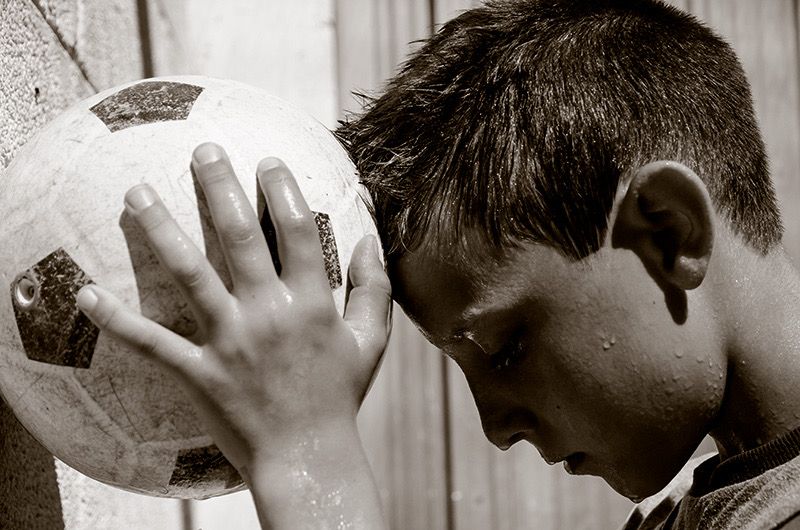From Street Sport to No. 1 Sport in the World – Soccer Equalizes the Playing Field
The Soccer World Cup is the largest and most popular sports event on the planet. It is estimated that half of the world population would have watched some of its games by the time it ends in mid-December.
At an Ethnic Media Services briefing, Dec. 2, veteran ethnic media reporters – Henrik Rehbinder, Journalist and Analyst; Charles Anchang, Co-Publisher, Immigrant Magazine; Ehab Zenga, Professional Soccer Coach and Owner, Legacy Anaheim FC and Director of Coaching, California Futbol Club; and Andrew Howoon Jo, Owner & Director of Coaching, UMA FC, LaGrange, GA – shared insights into why half the world is glued to the World Cup being played in Qatar.

Rehbinder started his tryst with soccer, “like many Argentinians, in Latin America, just having a a ball as a little kid, and we start kicking. It came as natural. I don’t know, it became an addiction.
“You start kicking a ball, and playing, and running. It’s a great sport especially if you are young to run a lot and without any organization. We just start kicking in the street; we just kicking it anywhere; If you have a ball, it’s a ball, if you don’t have a ball, you kick a stone, or anything, and that’s how it started,” said Rehbinder.
Anchang who was born in Africa, resonated with Rehbinder. “In Cameroon, where I was born that was the only sport that we could afford to participate in as young kids. If we did not have a football, we would get even some banana leaves and tie them with rubber. We made football out of rubber from tires so we could play because that’s how we connect and guess what happened, Cameroon got in as one of the first major countries in the World cup back in the days of Roger Miller.
“What soccer represents to me – it’s been a major gateway for putting Cameroon on the map more than anything else done in Africa,” said Anchang.
Zenga said he was introduced to football by chance. “I was just going to support my brother who had a tryout with a team, one of the best teams in Egypt, called Ali Club. I was behind the goal, supporting my brother and one ball come out of balance and I dive to the ball and caught the coach’s eye.
“After the coach’s talk, I played since I was nine. I grew up playing with the youth programs and then played in the national team of Egypt; then I went with Africa Championship,” said Zenga.
“I grew up with soccer in Korea. I was introduced to soccer at 10, by my elementary school head coach. I played until I was 22, for 10 to 12 years,” said Coach Jo.
“I later became a soccer coach to develop players like me,” he added.
The speakers gave their own reasons for football being the choice of their communities. It was a game that someone could get started with very little resources. As a kid, all of them had started alone and with minimal cost involved.
The fact that it was cheap and exciting at the same time, and did not require rules or organization, it became the game of choice for the mass.
“The World Cup has developed slowly. They were small back when they started, there were 11 or 12 teams, and they grew in many more, all because of FIFA, the organization of football. This has allowed to make it a global sport.
“That said, the sport still makes me feel like a kid,” said Rehbinder.
“I see football, especially when you watch the World Cup, there’s kind of a subliminal warfare going on in terms of dominance. People are trying to portray their sense of organization, their skill set, and trying to portray their dominance as a collective of a sovereign under this a small theme called football.
“Even the U.S. is now participating fully, getting very engaged with World football to the point where they’re becoming a major contender in the World Cup, all because of the culture. As you see more immigrants come from all over the world to the U.S., you see how the impact of the immigrant culture of football has penetrated America.
“When you look at these soccer teams you see so many children, for instance, the U.S. Soccer team will have the son of the President of Ghana, of Liberia, where who scored the first goal for the U.S. was the son of a famous one of the most famous African soccer players. George Weyer, who used to play in Liberia, then played in Cameroon, then went to play in Europe, so you see the culture of people follow U.S. football for many reasons.
“There’s also betting that goes around football in terms of the scores, lottery, so football is very engaging,” said Anchang.
Zenga stressed on the fact that football was a sport someone could play with very minimal resources. He said it started with the British army when they would be running with a ball in the fields in various countries that were under British rule and were economically challenged. The sport caught on and people started imitating in their own native fashion with whatever resources they could muster.
Coach Joe compared the compelling nature of football and soccer compared to any other sports. “To play soccer, it’s very easy starting. We just need one ball. It’s very easy to pick up compared to other sports like a baseball,” said Coach Jo.
“Women’s soccer doesn’t generate as much money as men’s soccer and that’s what it creates the inequalities in compensation, and also in the viewership, but it is slowly catching up,” said Rehbinder.
Anchang spoke about the challenge, “Soccer is a very fast game. Football is a very fast game, you have a lot of running involved.
“It’s very challenging and sometimes most females are not really encouraged. Women are shaped differently from men,” said Anchang. And that puts extra burden on them “when running around the soccer field,” he added.
“But in the meantime, I see that slowly there’s been a lot of progress in the participation and inclusivity of the female gender in the sport because the pay is good. There are a lot of opportunities to become influencers because you participate in the sport and more and more countries are beginning to participate in the sport because they’re encouraging building female teams for World football,” said Anchang.
“In the United States, when I coached the young kids, the girls, the only problem only challenge for the girls was when they grew up. Anyone became 18 or 19, they would start quitting soccer, to go to a different direction, and they play different sports, or just stop playing sports at all and the focus on their career.
“For those who are still in soccer, they are very good,” said Zenga.
The Current World Cup
“It is very hard to say who’s going win the championship. Specifically, in this world cup, it is more unclear what team is going to win. I’m a Korean American so I want to favor South Korea, but the reality I can say France or Brazil,” said Coach Jo. “The next World Cup in four years is going to be played in North America,” he added.


